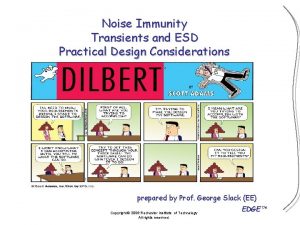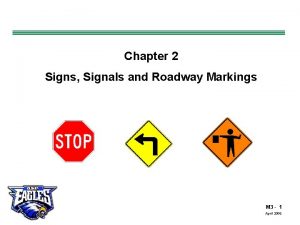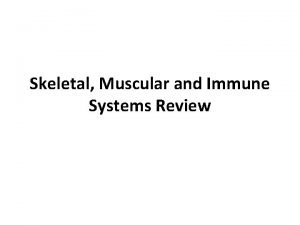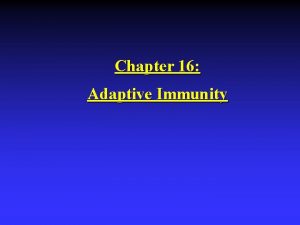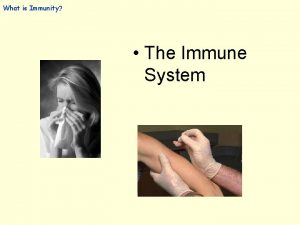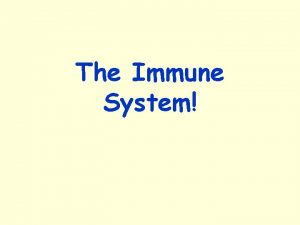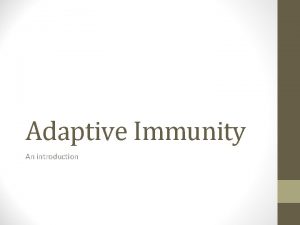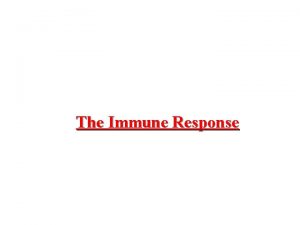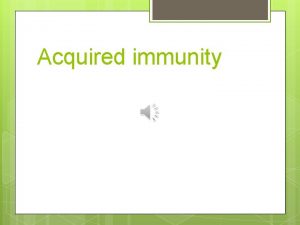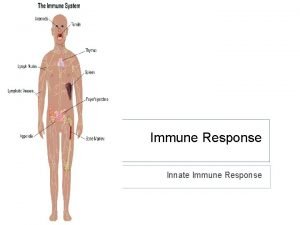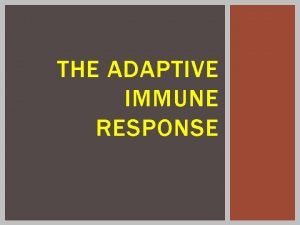Adaptive Immunity Adaptive Immune Response n Slower response










- Slides: 10

Adaptive Immunity

Adaptive Immune Response n Slower response, specific, has “memory”

Antibody titer (antibody concentration) in serum (arbitrary units) Secondary immune response to antigen X 104 103 Primary immune response to antigen X 102 101 100 0 7 14 21 28 35 42 49 56 Time (days) Adaptive immunity allows for a faster and more robust response to repeated infection

4 questions about how the immune system functions 1. How to recognize and distinguish between pathogens? 2. How to attack and destroy pathogens? 3. How to avoid friendly fire? 4. What happens when pathogens evade detection?

Two main types of lympocytes All lymphocytes originate in the bone marrow T-cells -become immunologically mature in the thymus B-cells -become immunologically mature in the bone marrow

Lymphocytes use receptors to recognize pathogens T-cell: T-Cell receptor (TCR) B-Cell: Antibody or Immunoglobulin (Ig)

Self vs non-self proteins n n Antigen: any substance capable of provoking an immune response; molecules not normally present in the body; non-self MHC protein – major histocompatibility complex proteins appear on every cell in our body; its presence defines self

MHC proteins include small sections of other body proteins n MHC “presents” small pieces of protein on the surface of every cell in your body

“Training” T-cells to tell self from non-self

Immature lymphocytes Thymus Red bone marrow Bone marrow Lymph nodes, spleen, and other lymphoid tissues Immunocompetence Naïve cells exit to lymph organs Activation occurs when encountering pathogen
 Primary immune response and secondary immune response
Primary immune response and secondary immune response Difference between acquired immunity and innate immunity
Difference between acquired immunity and innate immunity Tonsil histology
Tonsil histology Adaptive immunity
Adaptive immunity Adaptive noise immunity
Adaptive noise immunity Chapter 2 signs, signals, and roadway markings
Chapter 2 signs, signals, and roadway markings Which statement best describes an immune response? *
Which statement best describes an immune response? * What is the third line of defense in the immune system
What is the third line of defense in the immune system Primary and secondary immune response
Primary and secondary immune response Any substance capable of provoking an immune response
Any substance capable of provoking an immune response Biosimilar study
Biosimilar study




